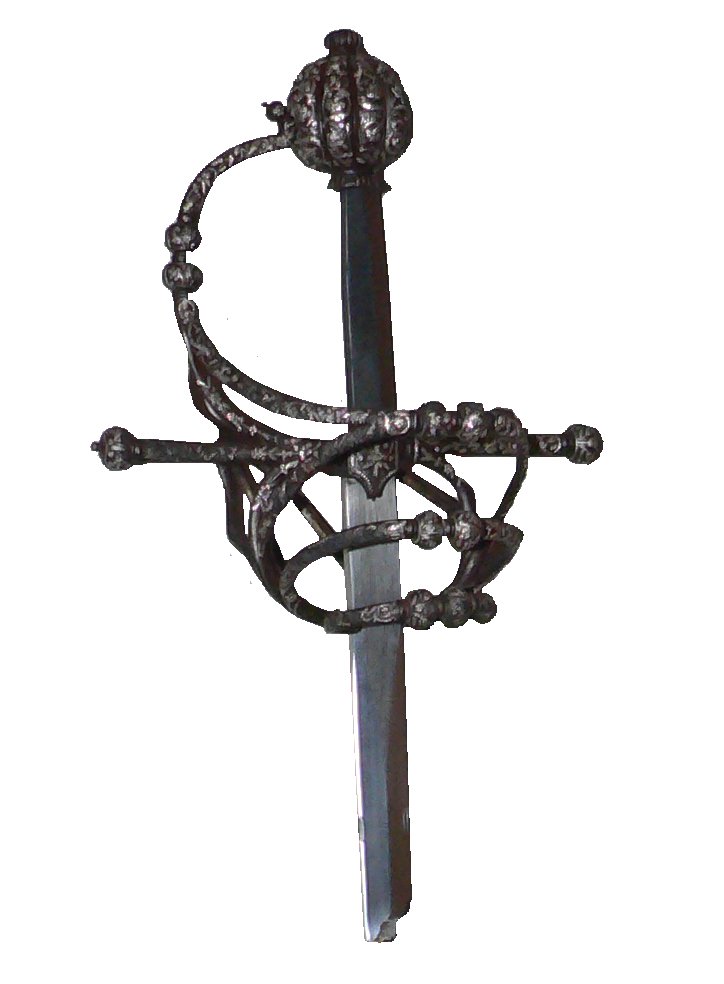|
Quillons
A sword's crossguard or cross-guard is a bar between the blade and hilt, essentially perpendicular to them, intended to protect the wielder's hand and fingers from opponents' weapons as well as from his or her own blade. Each of the individual bars on either side is known as a quillon or quillion. History The crossguard was developed in the European sword around the 10th century for the protection of the wielder's hand. The earliest forms were the crossguard variant of the Spatha used by the Huns, the so-called Pontic swords. There are many examples of crossguards on Sasanian Persian Swords beginning from the early 3rd century. They might be the oldest examples. Crossguards were not only used to counter enemy attacks, but also to improve grip. They were later seen in late Viking swords. Crossguards are a standard feature of the Norman sword of the 11th century and of the knightly arming sword throughout the high and late medieval period. Early crossguards were straight metal bar ... [...More Info...] [...Related Items...] OR: [Wikipedia] [Google] [Baidu] [Amazon] |
Hilt
The hilt (rarely called a haft or shaft) is the handle of a knife, dagger, sword, or bayonet, consisting of a guard, grip, and pommel. The guard may contain a crossguard or quillons. A tassel or sword knot may be attached to the guard or pommel. Pommel The pommel ( Anglo-Norman "little apple") is an enlarged fitting at the top of the handle. They were originally developed to prevent the sword from slipping from the hand. From around the 11th century in Europe, they became heavy enough to be a counterweight to the blade. This gave the sword a point of balance not too far from the hilt, allowing a more fluid fighting style. Depending on sword design and swordsmanship style, the pommel may also be used to strike the opponent (e.g. using the Mordhau technique). Pommels have appeared in a wide variety of shapes, including oblate spheroids, crescents, disks, wheels, and animal or bird heads. They are often engraved or inlayed with various designs and occasionally gilt and moun ... [...More Info...] [...Related Items...] OR: [Wikipedia] [Google] [Baidu] [Amazon] |
